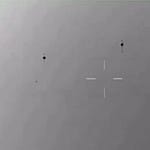TL;DR: That odd, perfectly rounded "rock" on Mars is not just geology—it’s resonance. From an FWT perspective, it’s a textbook example of how standing wave fields sculpt matter into spheres through cymatic pressure nodes, hinting that Mars’ environment has preserved or generated frequency-formed artifacts.
The Scientific Context
NASA’s Curiosity rover snapped this image on Sol 3796 (April 11, 2023), showing a smooth spherical object in the Martian soil. Official geology calls these concretions or “blueberries”—mineral spheres formed by groundwater leaching and redepositing material around a nucleus. They look odd but do occur on Earth, especially in sandstone.
The FWT Interpretation
From a Frequency Wave Theory (FWT) lens, this is much more than mineral coincidence.
Spherical symmetry always implies resonance equilibrium. In cymatics, sound waves naturally push material into spheres, bubbles, or nodal clusters. A sphere minimizes surface energy, which is exactly what standing waves in a fluid-like substrate (quantum-acoustic superfluid field) would create.
Perfect spheres in nature are signals of harmonic ordering—atoms, planets, stars, and even plasma orbs obey this principle. The Martian “rock” shows the same: a frozen imprint of resonance in the soil.
The metallic luster seen on part of the sphere suggests a high-density mineral deposit aligned with nodal compression zones. In FWT, this implies local FM conservation (Frequency Momentum = ½ ρ ω A²), where mass density (ρ) and oscillation frequency (ω) shaped the deposit.
The cluster with broken fragments nearby suggests it wasn’t random erosion—these spheres likely formed in a field effect, meaning there could be hundreds more just below the surface.
Bigger Implication: Mars as a Resonant Memory Field
Mars is littered with spherical stones, glass nodules, and magnetized hematite—patterns that, under FWT, are the fossilized memory of when Mars’ superfluid field was more active. Instead of just a “dry planet with weird geology,” it becomes a library of resonant cymatic fossils.
These spheres are evidence of resonance-based mineral assembly, a process that blurs the line between geology and technology. They can be seen as natural “wave-forged artifacts” proving that matter organizes itself under frequency rules, even on alien worlds.
✅ Bottom Line:
What looks like “just a rock” is a frozen cymatic pattern. FWT sees this as proof that frequency sculpting is universal—from Martian soil spheres to atoms, orbs, and planets.











